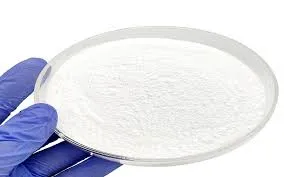Understanding the Importance of Pharmaceutical Active Ingredients
Pharmaceutical Active Ingredients (APIs) are central to the development and efficacy of medications. These compounds are the primary ingredients in pharmaceutical drugs that produce the intended effects on a patient’s body. Whether in the form of tablets, injections, or topical treatments, APIs are crucial in ensuring that therapeutic outcomes are achieved.
1. What Are Pharmaceutical Active Ingredients?
Pharmaceutical Active Ingredients are chemical substances that are intended to provide pharmacological activity or to affect the structure/function of the body. An API can be a single chemical compound, a mixture, or a complex molecule such as a monoclonal antibody. Every medication contains APIs in a certain concentration, which must be carefully formulated to achieve desired therapeutic effects without causing harm.
For instance, in a common drug like aspirin, the active ingredient is acetylsalicylic acid, which is responsible for reducing pain, inflammation, and fever. On the other hand, an insulin injection contains the active form of insulin, which is crucial for regulating blood glucose levels in diabetic patients.
2. The Role of APIs in Medication Formulation
The formulation of a medication involves combining APIs with excipients, which are inactive substances that serve various purposes, such as aiding in the drug’s delivery, stability, or taste. The APIs must be blended with excipients in such a way that they maintain their integrity and potency until they are administered to patients.
The development of a solid form of medication, such as tablets or capsules, may require specific excipients that assist in the manufacturing process or enhance the therapeutic effects of the API. For example, lactose may be used as a filler in tablets, ensuring that the medication is consistent in strength and dosage.
3. The Development and Production of APIs
The journey from an API’s conceptual stage to its final form as a commercially available drug involves rigorous research and quality control. The process typically starts with extensive laboratory research where scientists synthesize the chemical compounds and assess their efficacy and safety through preclinical experiments.
pharmaceutical active ingredients list

Once an API shows promise, it must undergo several phases of clinical trials involving human participants. These trials are essential for determining the drug's safety profile, optimal dosage, and potential side effects. After successful trials, the API is then submitted for regulatory approval, such as from the U.S. Food and Drug Administration (FDA) or the European Medicines Agency (EMA).
The production of APIs is highly regulated, requiring compliance with Good Manufacturing Practice (GMP) guidelines. These regulations ensure that APIs are produced consistently and safely, with minimal risk of contamination.
4. The Global API Market
The global market for APIs has been growing steadily, driven by increasing healthcare demands and advancements in technology. The rise of chronic diseases, an aging population, and ongoing pharmaceutical research contribute to this growth. Emerging markets, particularly in Asia, have become significant players in API production, often offering cost-effective solutions for pharmaceutical companies.
However, the market faces challenges such as regulatory hurdles, supply chain complexities, and the need for ongoing innovation. The COVID-19 pandemic highlighted vulnerabilities in the global API supply chain, prompting many countries to reconsider their dependence on foreign API sources. As a result, there is a growing movement towards localizing production to ensure the availability of essential medicines.
5. Future of Pharmaceutical Active Ingredients
The future of APIs is closely tied to advancements in biotechnology and synthetic chemistry. Innovations such as gene therapy, personalized medicine, and targeted therapies are reshaping the landscape of drug development. The focus is shifting towards creating more efficient and effective APIs that cater to the individual needs of patients.
Moreover, sustainability is becoming increasingly important in API production. Pharmaceutical companies are now exploring greener methods of API synthesis, including biocatalysis and the use of renewable resources. These initiatives aim to reduce the environmental impact of pharmaceutical manufacturing while ensuring drug supply continuity.
Conclusion
Pharmaceutical Active Ingredients play a vital role in healthcare by forming the backbone of effective medications. Understanding their significance, production processes, and market dynamics is essential for stakeholders throughout the pharmaceutical industry. As science progresses, the future holds the promise of innovative and sustainable APIs that will enhance patient care and improve health outcomes globally.

